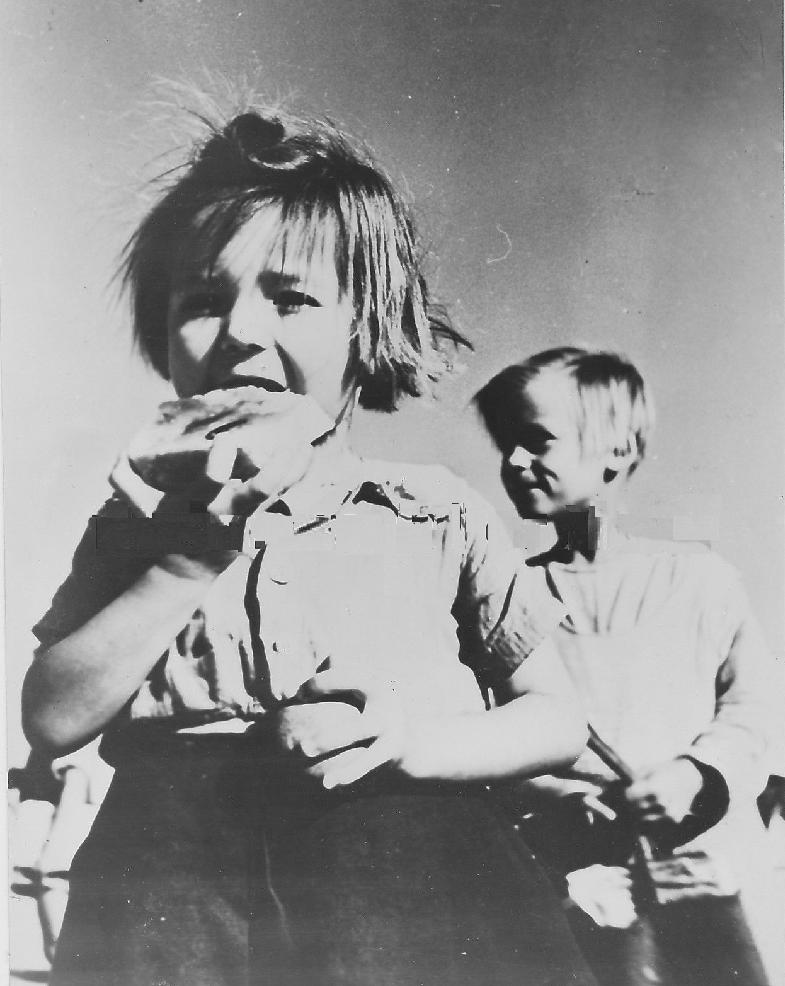
UNRRA: Midle-Eastern Camps

Figure 1.--Here we see Yugoslav children at an unidentified UNRRA camp in the Middl East. The press caption read, "Yugoslav Children Eat Breakfast at Middle Rast Refugee Camp: Breakfast is a happy timr for these Yugoslav youngsters at a refugee camp in the Middle East. The children, driven from their homes by military operations, live in tent cities which are soperbised by the United Nations Relief and Rehabilitation Administration. Thousands of children under 13 years of age in these camps recive good food, ample clothing, care and guidance by trained personnel." The photograph is dated Julky 6, 1944 just at the point that NAZI military power was beginning to collapse and UNRRA could begin in the wake of advancing Allied armies its enormous task of saving millions of lives in liberated Europe.
|
|
The United States sperheaded the formation of the United Nations Relief and Rehabilitation Administration (UNRRA) (1943). UNRRA's first operations were in the Middle East and North Africa, taking over the operations of the British Middle East Relief and Refugee Administration and the camps thy set up to care for Europeans that manged to escape from the NAZIs and Soviets. The Middle East was he one area that the British managed to hold and sucessfully resist Axis military offensives. The numbers of European refugees reaching the Middle was realtively small, something like 40,000 people. It was not easy to escape from the NAZIs and Soviets. The refugees escaping ftrom the NAZIs were mnostly Greeks and Yugosalvs. The refugees escaping from the Soviets were mostly Poles. Other southern European countrues near the Middle East were either Axis coutrues (Italy, Romania, and Bulgaria). Spain did not joint the Axis, but has clse rekations to the NAZis and Italian Fascists, The difficulties of eacaping meant that the numbers of refugees was relativly small, compared to the desperate situation being created by the NAZIs in Europe. The need for asssistance building up in NAZI-occupied Europe was without parallel in European history, including the situation after World War I. Most of the food it distributed was provided by the Americans.
CIH -- WW II

Navigate the CIH World War II Section:
[Return to Main UNRRA page]
[Return to Main displaced children page]
[Return to Main Holocaust displaced children page]
[Return to Main World War II page]
[Return to Main Holocaust page]
[About Us]
[Aftermath]
[Biographies]
[Campaigns]
[Children]
[Countries]
[Deciding factors]
[Diplomacy]
[Geo-political crisis]
[Economics]
[Home front]
[Intelligence]
[Military forces]
[POWs]
[Resistance]
[Race]
[Refugees]
[Technology]
[Totalitarian powers]
[Bibliographies]
[Contributions]
[FAQs]
[Images]
[Links]
[Registration]
[Tools]
[Return to Main World War II page]
[Return to Main war essay page]
[Return to CIH Home page]
Created: 6:52 PM 1/10/2017
Last updated: 6:52 PM 1/10/2017



